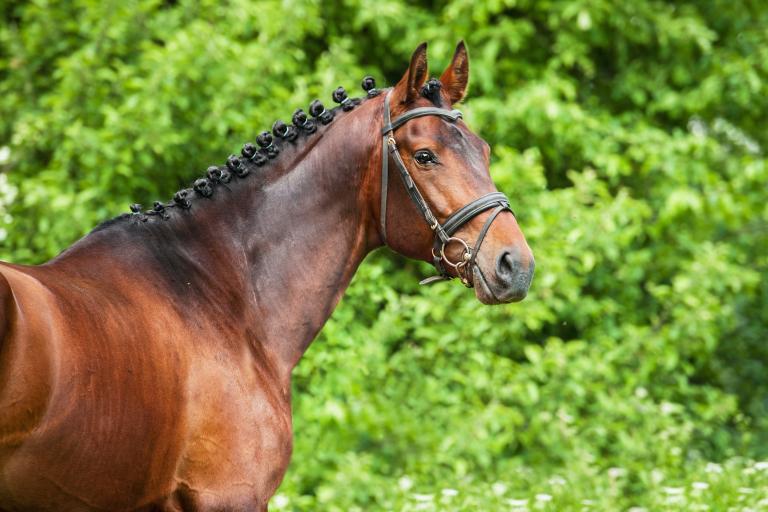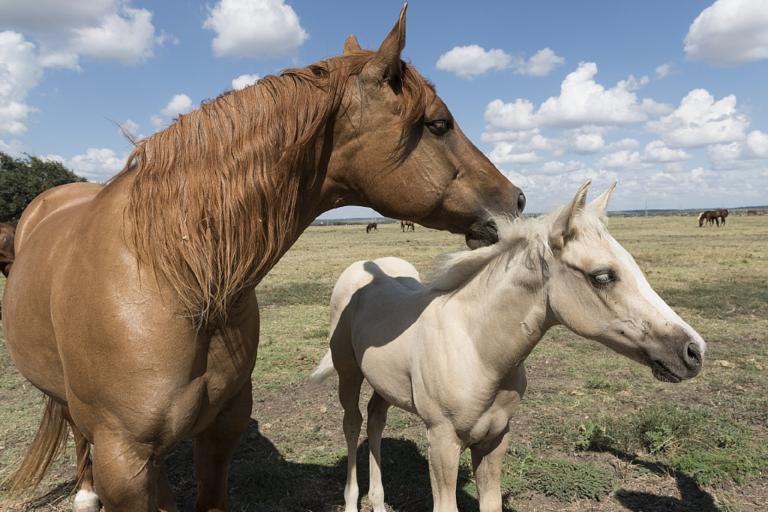Glanzmann Thrombasthenia (GT Horse)
Glanzmann Thrombasthenia (Equine coagulopathy - GT) is a blood clotting disorder in horses and causes recurrent nosebleeds and frequent other bleeding. This is caused by a dysfunction of the blood platelets (thrombocytes).
Genetic Test: Currently not available (Contact us for more information.)
Symptoms
- Recurrent bleeding (cutaneous, nose, mucosal, gingival etc.)
- Delayed, inproper wound closure/healing
General Information
- Platelet function disorder → inproper clotting and thus delayed wound closure.
- Increased bleeding tendency → might cause serious problems with large wounds.
Test Information
This test detects the single basepair change (in Thoroughbreds, Oldenburger and Quarter Horses) and the deletion of 10 basepairs (in Peruvian Paso and Quarter Horse) in the in the ITGA2B gene.
Genotype and Lab Report
Inheritance: autosomal recessive
→ Only horses with two copies of the variant (ca/ca) are affected. Horses with only one copy (N/ca) are clinically healthy carriers.
→ There are two mutations causative for GT (gt1 and gt2). Horses may have one or both variants, so this test identifies both mutations.
Genotype
N/N = normal
The horse has no copies of the genetic variant causative for GT and therefore cannot pass it on to its offspring.
N/gt1 = carrier
The horse is clinically healthy. The genetic variant causative for GT will be passed on to its offspring with a probability of 50%.
N/gt2 = carrier
The horse is clinically healthy. The genetic variant causative for GT will be passed on to its offspring with a probability of 50%.
gt1/gt1 = affected
The genetic variant causative for GT will be passed on to all its offspring. All offspring will be carriers (N/gt1).
gt2/gt2 = affected
The genetic variant causative for GT will be passed on to all its offspring. All offspring will be carriers (N/gt2).
gt1/gt2 = affected
The genetic variant causative for GT will be passed on to all its offspring. All offspring will be carriers (N/gt1 or N/gt2).
Recommendations
- Carriers may be bred to normal animals (N/gt1 x N/N or N/gt2 x N/N) without any risk of producing affected offspring. The offspring should also be tested before breeding to determine if they are carriers or normal.
- Breeding two carriers (N/gt1 x N/gt1, N/gt1 x N/gt2, N/gt2 x N/gt2) is not recommended due to the possibility of 25% of the offspring being affected.
- Affected animals (gt1/gt1 or gt2/gt2 or gt1/gt2) should not be used for breeding.
Literature
Sanz, MG., Wills, TB., Christopherson, P., Hines, MT.: Glanzmann thrombasthenia in a 17-year-old Peruvian Paso mare. Vet Clin Pathol 40:48-51, 2011. Pubmed reference: 21291483. DOI: 10.1111/j.1939-165X.2011.00289.x.
Christopherson, PW., van Santen, VL., Livesey, L., Boudreaux, MK.: A 10-base-pair deletion in the gene encoding platelet glycoprotein IIb associated with Glanzmann thrombasthenia in a horse. J Vet Intern Med 21:196-8, 2007. Pubmed reference: 17338169.
Macieira, S., Rivard, G.E., Champagne, J., Lavoie, J.P., Bédard, C.: Glanzmann thrombasthenia in an Oldenbourg filly. Vet Clin Pathol 36:204-8, 2007. Pubmed reference: 17523098.
Christopherson, PW., Insalaco, TA., van Santen, VL., Livesey, L., Bourne, C., Boudreaux, MK.: Characterization of the cDNA Encoding alphaIIb and beta3 in normal horses and two horses with Glanzmann thrombasthenia. Vet Pathol 43:78-82, 2006. Pubmed reference: 16407493. DOI: 10.1354/vp.43-1-78.
Further information is available at Online Mendelian Inheritance in Animals.


